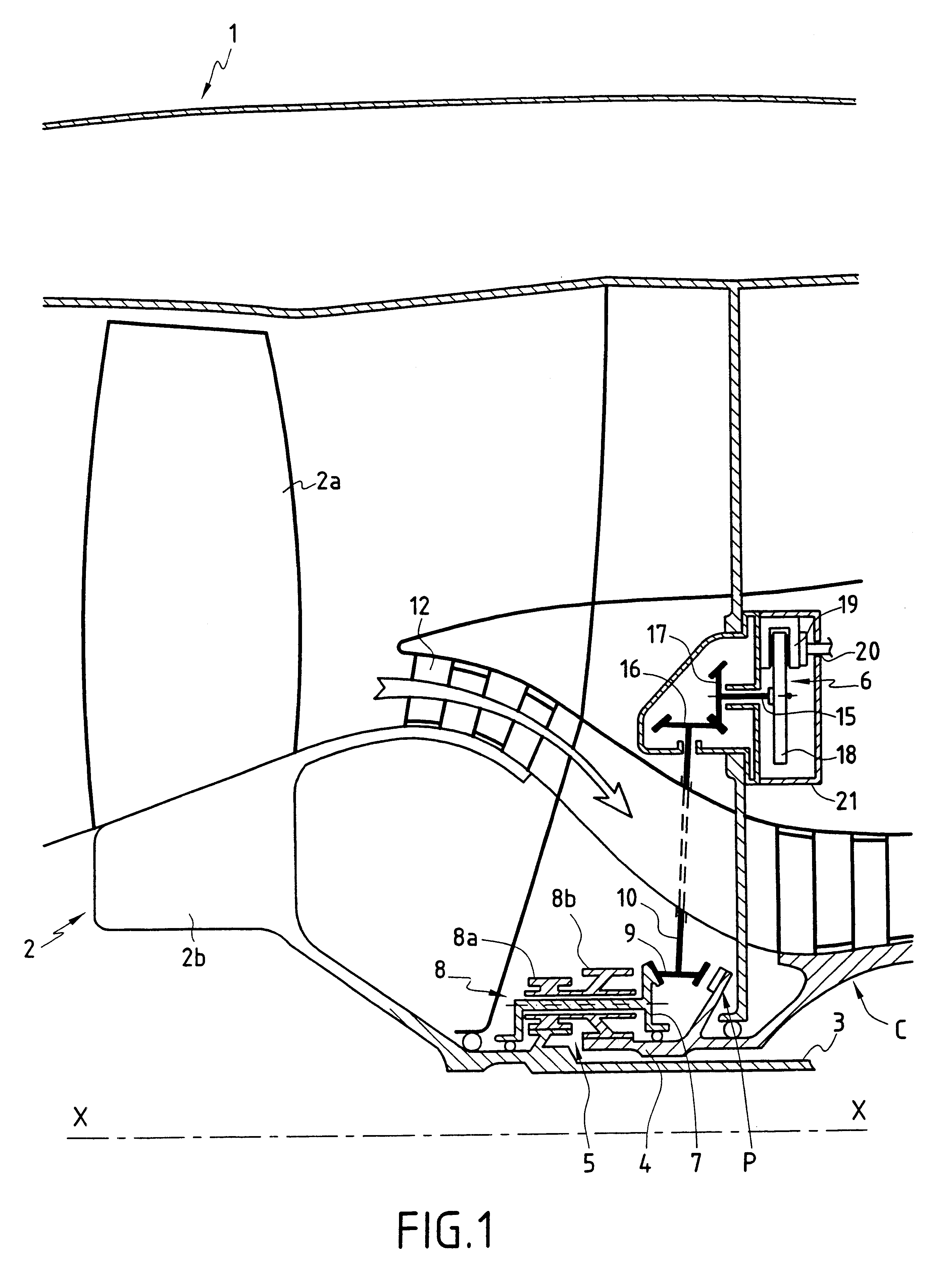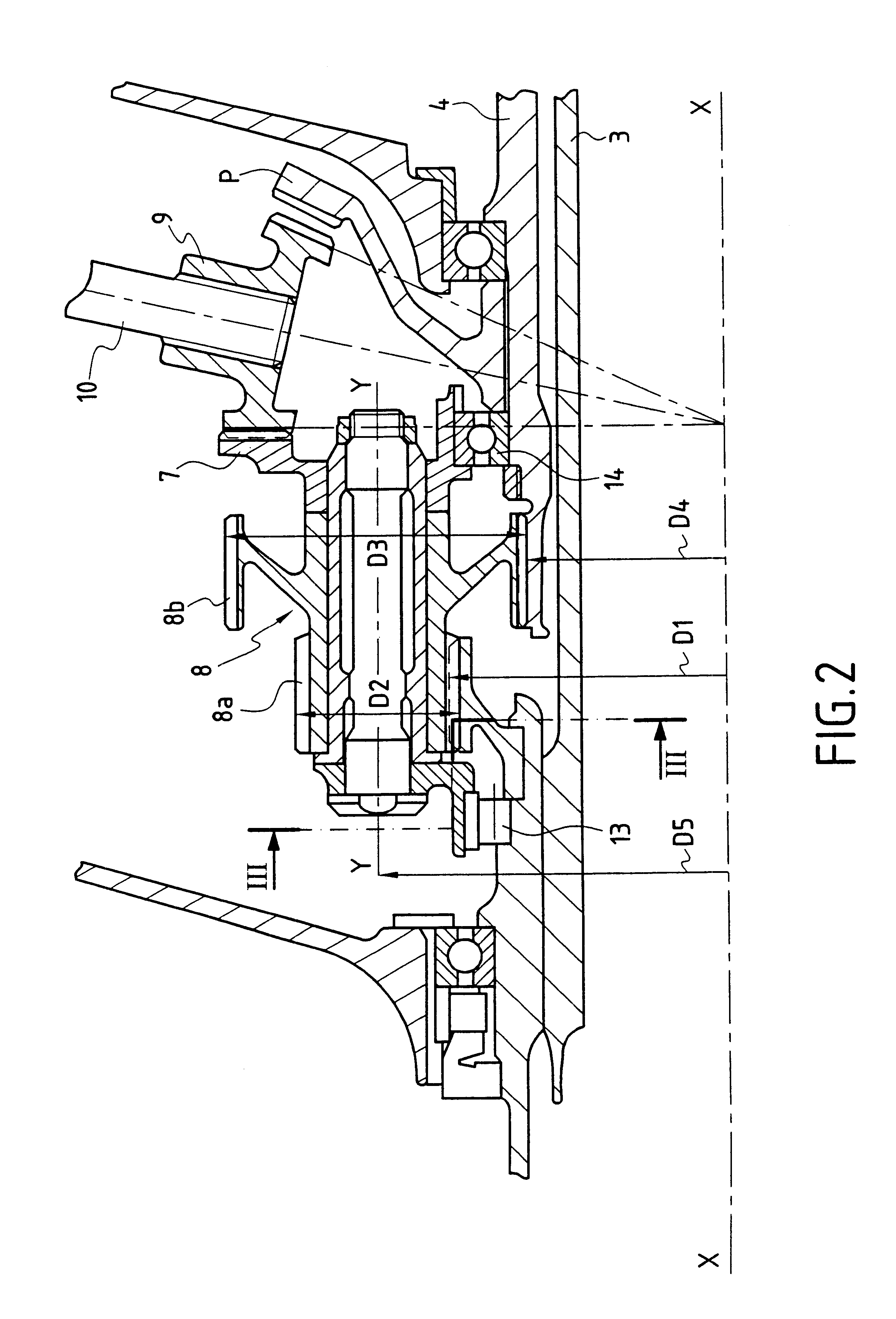Emergency device for relighting a windmilling turbojet
a technology of emergency device and windmilling, which is applied in the ignition of turbine/propulsion engine, engine starter, machine/engine, etc., can solve the problems of increasing the difficulty of relighting the combustion chamber, increasing the seriousness of the consequences in the event of engine shutting down, and reducing the speed at which the compressor rotates when windmilling, etc., to achieve continuous operation, reduce the effect of drawbacks, and simple, fast and reliable us
- Summary
- Abstract
- Description
- Claims
- Application Information
AI Technical Summary
Benefits of technology
Problems solved by technology
Method used
Image
Examples
first embodiment
In order to assist or replace the starter in flight, the turbojet includes an emergency relighting device. In a first embodiment, this device comprises a differential 5 and a braking system 6. The differential 5 serves to interconnect the low- and high-pressure shafts 3 and 4 and serves to compensate for the speed differences between the high-pressure body and the low-pressure body during normal operation of the turbojet.
It is known that the low- and high-pressure bodies rotate at different speeds. For example, for a conventional turbojet having a large bypass ratio, the high-pressure body has an N2 speed of rotation of about 10,000 revolutions per minute (rpm) to 12,000 rpm, and the low-pressure body runs at an N1 speed of about 2,000 rpm to 3,000 rpm. With these values, the ratio between these speeds lies in the range about 3 to 6.
In order to compensate for these speed differences, the differential 5 in this first embodiment essentially comprises (cf. FIGS. 2 and 3):
at least one p...
second embodiment
In the invention show in FIG. 5, the differential 5' of the emergency relighting device is placed at a braking system 61 outside an intermediate casing 22. The advantage of this configuration is that it facilitates maintenance of the emergency relighting device (e.g. changing the differential), since it is thus made easily accessible.
In the example shown in FIG. 5, it can be seen that the emergency relighting device is made up in particular of two bevel gears 23, 24, which mesh respectively with the first and second shafts 3 and 4 and which are connected to the differential 5' via two respective drive shafts 25 and 26 that are concentric. The differential 5' is a conventional configuration of gears and is therefore not described in detail. The two drive shafts are not necessarily concentric; they could be parallel.
It should also be observed that the braking system 6' is identical to that used in the first embodiment, i.e. it is advantageously constituted by a disk brake.
Naturally, t...
PUM
 Login to View More
Login to View More Abstract
Description
Claims
Application Information
 Login to View More
Login to View More - R&D
- Intellectual Property
- Life Sciences
- Materials
- Tech Scout
- Unparalleled Data Quality
- Higher Quality Content
- 60% Fewer Hallucinations
Browse by: Latest US Patents, China's latest patents, Technical Efficacy Thesaurus, Application Domain, Technology Topic, Popular Technical Reports.
© 2025 PatSnap. All rights reserved.Legal|Privacy policy|Modern Slavery Act Transparency Statement|Sitemap|About US| Contact US: help@patsnap.com



